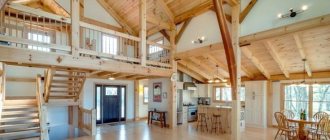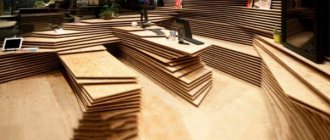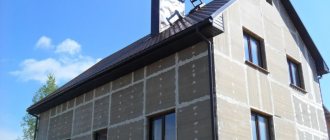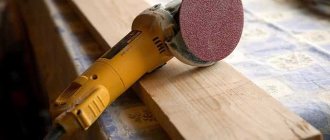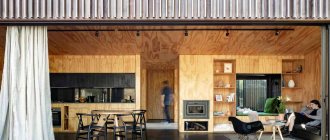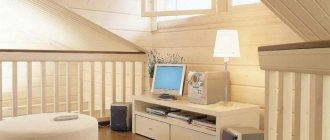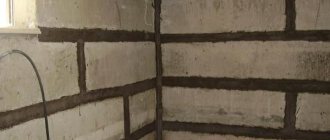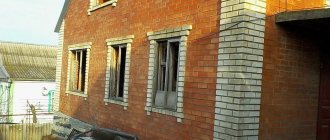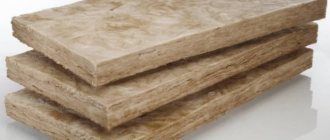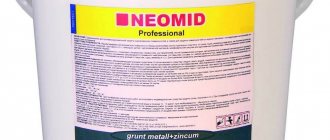Methods for finishing brick walls
With all the variety of ways to perform finishing work on brick walls, they can be divided into two mutually exclusive types.
It is impossible to single out the best or the worst of them, since in a particular case each has its own advantages. You can understand how to finish a brick wall by studying the following options:
- wet method - finishing performed using plaster mixtures;
- dry method - finishing with facing materials: gypsum board, wooden panels, lining and others.
You can leave the wall unplastered, correctly fitting it into the interior.
As an option for modern decor, brick walls can remain in their original form. They are washed, cleaned, varnished or painted. When creating some interiors, on the contrary, they try to reproduce the imitation of brickwork in its various variants.
The finishing method may also depend on the quality of the work on the brick walls. The feasibility of a particular method of performing finishing work can be determined depending on the deviations of the parameters of the structure being finished from the standard values indicated in the table:
| № | Type of finishing of a brick room | Vertical and horizontal deviation |
| 1 | Plaster | Up to 5 cm |
| 2 | Cladding with various materials | More than 5 cm |
These recommendations are due to the fact that increasing the layer of plaster will increase financial costs and may negatively affect the quality of the work performed.
Wooden products for finishing
The following products are considered the most popular for interior cladding:
Features of lining and eurolining
Lining is a straight board that is often used for cladding walls, floors, and ceilings. Its installation is carried out using the tongue-and-groove method. The surface of these panels is flat and smooth, and can be additionally sanded and treated with special impregnations.
Eurolining has some differences, which consist in quality characteristics. Products of this type are much stronger and stronger. The surface of the panels is well sanded and treated with special mixtures that increase the moisture resistance of the products and protect them from fire.
Important! In accordance with GOST, eurolining must have standard dimensions. The thickness parameters are 1.3, 1.6 and 1.6 centimeters, the profile width can vary from 9 to 12 centimeters, the tenon size can vary from 8 to 9 mm. The length dimensions are usually determined by the manufacturer himself, but they, as a rule, should not be more than 6 meters.
Wall finishing with gypsum board
Installing plasterboard coating on brick walls is a widely used finishing option. This technology has many positive aspects, thanks to which gypsum board is very popular when creating a wide variety of interior interiors for various purposes:
- gypsum board can be used to create a perfectly flat surface, which greatly simplifies the subsequent work of wallpapering, laying tiles or simply painting;
- gypsum plaster walls can bear the load from the weight of household appliances, furniture and decorative elements;
- You can not only cover brick walls with gypsum board, but also make niches, pilasters, columns and other architectural details that can decorate the room being finished;
- When finishing a brick wall from the inside with plasterboard, in parallel, if necessary, you can make additional insulation of the walls by laying insulation between the main wall and the gypsum board sheets.
Cladding brick walls with plasterboard eliminates wet technological operations.
In addition, the popularity of gypsum board is associated with the technology of its installation, accessible to everyone, which consists of performing simple operations:
- A special metal gypsum plaster profile is placed plumb and level on brick walls.
- Gypsum sheets are attached to the frame with self-tapping screws.
- The seams are puttied and taped with reinforcing tape to prevent the formation of cracks.
- The holes in the places where the self-tapping screws pass are also puttied.
- Putty areas are sanded and primed.
The resulting surface can be painted, wallpapered, tiled, or treated with decorative plaster to create a unique interior.
Plastering brick walls
Plastering the walls can only be done after the brickwork has dried and the mortar has hardened and reached its design strength.
If you plaster dry walls, the plaster layer will crack and collapse in places. Carrying out the presented event includes the following steps:
- the wall surface is cleaned with a metal brush;
- moistened with water using a brush;
- a liquid plaster solution is sprayed;
- after the first layer has dried, a second main plaster layer with a thickness of no more than 2 cm is applied. This operation is carried out using a plaster trowel and a trowel. Using a trowel, throw the mortar onto the wall, level it with a trowel, and remove the excess mortar;
- After leveling the solution, its surface is grouted. This is done using a grater in a circular motion until a smooth surface is obtained;
- if the surface has hardened and cannot be grouted with a trowel, then the plaster is wetted with water and the movements are repeated again;
- The evenness of the surface is controlled by a trowel and a rule of at least 2 m in length.
On curved walls you can’t do without spraying.
If the brick walls are laid perfectly evenly and do not have large deviations, then plastering the walls can be done without applying the first layer - spraying. Also, to simplify the work and obtain a better surface, you can use metal beacons and ready-made plaster mixtures.
In this case, the brick wall is finished using the following technology:
- Metal beacons are attached to the wall at a distance of 1-1.5 m from each other using a level and plumb line.
- The plaster mixture is poured between them and leveled using a trowel.
- The resulting surface is rubbed with a grater.
- Beacons are removed from the plaster layer.
- The grooves from the beacons are sealed with a plaster mixture, and the resulting surface is thoroughly rubbed until it reaches a certain evenness. For details of the process, watch this video:
After plastering work is completed, the walls are puttied. Small sinkholes that cannot be eliminated when grouting the plaster layer are finally leveled for further application of the finishing coating. Plastered walls are usually painted or covered with wallpaper.
Varieties
There are a huge number of types of artificial bricks on the building materials market that are used for interior decoration of houses, and in particular, corridors, and you must first understand how they differ.
Clinker tiles
Quite often, clinker tiles are called decorative bricks. This is a type of ceramic material that has a rough or smooth surface. It is light, quite durable, has minimal thickness and a rich range of colors.
From cement
Another type of decorative brick includes cement products. This material is made manually by mixing a solution of sand, clay and water and giving it shape using formwork. This finishing material resembles ordinary brick, but unlike its counterpart, it is quite fragile and you need to be especially careful with it when laying it. But the surface of this finish turns out to be very interesting and textured.
However, when caring for cement bricks, you need to remember that you should not overly moisten this material, otherwise it may simply deteriorate; in addition, the use of any chemicals to clean it is also prohibited.
This material is environmentally friendly and does not cause allergies. Walls lined with cement bricks can “breathe” freely. The disadvantage of this coating is that when laying this material a lot of dust and debris is generated, and also that during operation it is necessary to maintain a constant air humidity of no more than 50% to maintain the integrity of the fragments.
Gypsum stone
Another type of decorative brick is gypsum stone. This is the most inexpensive of the materials presented here for finishing corridors, halls and hallways. It weighs very little, so it can even be mounted on sheets of drywall. The disadvantages of this material are its fragility and the need for fairly dry air (here, the room humidity should also not exceed 50%).
With an increased rate, bricks may simply become brittle and collapse. But modern technology has practically solved this problem. After finishing the wall, this material is coated with a special varnish with a water-repellent effect, and this procedure significantly increases the service life of gypsum bricks.
Flexible tiles
Flexible brick-like tiles allow you to decorate rooms both inside and outside. It perfectly resists changes in temperature and humidity, and has high noise insulation rates. Laying such tiles is easy, they do not crumble, they bend well, and therefore do not require a completely flat surface.
If there are columns in your corridor and you want to decorate them with brickwork, this material will be an indispensable assistant for you, as it easily goes around all corners and circles.
Panels
You can also buy entire panels that imitate brickwork from various materials: MDF, PVC, glass-vibroconcrete. This will make it easier to install this facing material, especially if you cover the entire corridor walls with it.
Read with this
- Sand-lime brick
- Facade cladding panels
- Dimensions of standard bricks
- Clinker tiles for facades: a universal facing material
- Homemade Russian stove on the street under a canopy
- Types of bricks: characteristics and applications
- Decorative brick on the wall +75 photo examples
- Dimensions and cost of PVC plastic ceiling panels
- Decorative 3D panels for walls in the interior of the house
- Bricklaying in winter
Cork and wood covering
Cork panels are used to decorate bedrooms and children's rooms. This material has good sound insulation, has a pronounced texture and intricate pattern, and its installation is not difficult:
- the plug is attached with self-tapping screws to a wooden frame made of a block, previously installed on the surface to be finished;
- the seams between the panels are sealed with a special sealing material;
- The process is completed by coating the panels with varnish.
Various wooden materials are actively used for interior decoration.
They do not require additional finishing, as they have an attractive appearance and go well with wooden furniture. When finishing interior brick walls, the following important features must be taken into account:
- Such coatings should not be allowed to come into contact with moisture.
- When installing wooden coverings, it is necessary to use a membrane vapor barrier, and its fastening must be done on top of the sheathing.
- Wooden finishing boards, lining and other materials are connected to the frame and to each other without gaps, which eliminates the need for additional processing of the seams.
- Wooden coverings have good thermal insulation properties. For more information on how to cover walls with plasterboard, watch this video:
The color range of this material is quite diverse, which allows you to choose the necessary colors that harmoniously combine with the surrounding interior.
Rolled finishing materials
Roll materials are one of the most common types of building materials for interior decoration. The lion's share of all rolled materials offered on the construction market is occupied by wallpaper. A large selection of textures and colors can satisfy the most sophisticated requirements.
- Paper wallpaper
is widely used in the decoration of residential premises. Environmentally friendly, do not disturb the heat and air exchange in the room. Can be used almost anywhere, except in rooms with high humidity and the possibility of contamination. Thin single-layer paper wallpaper has been replaced by multi-layer wallpaper on a non-woven basis. Possessing all the positive qualities of its predecessors, non-woven wallpaper, due to its thickness, hides minor defects in the surface of a wall or ceiling and does not require careful preparation or an additional intermediate layer. The interior decoration of a frame house involves gluing thick wallpaper directly onto a wall made of OSB boards or plywood (only joints and seams are processed). - Washable (moisture-resistant) wallpaper
differs from paper wallpaper in its outer coating, which is easy to clean. It is not recommended for use in bedrooms due to fire hazard and poor ventilation, but for decorating a hallway, kitchen or bathroom it is just what you need. - Cork wallpaper.
The basis of cork wallpaper is paper onto which a thin (no more than 1 mm) cork veneer is glued. The extraordinary appearance, good sound insulation, environmental friendliness (only natural materials are used), and ease of maintenance make us turn a blind eye to the relatively high price. - Natural wallpaper
is made from plant material - bamboo, reed and grass. The high cost of wallpaper is fully compensated by its original appearance, environmental friendliness and all the advantages of natural materials.
In addition to wallpaper, polyvinyl chloride decorative finishing films (self-adhesive) are used in interior design. The material is of fairly high quality, is not afraid of moisture, is easy to clean, although it itself is resistant to pollution, it is completely breathable. Recommended for use in technical rooms (bathroom, pantry). In living rooms, PVC film should be used in fragments, as a decorative element.
Varieties of PVC film include roll coatings with a voluminous texture - vinisten and foam film. This material is obtained by applying PVC mass to a base of thick paper, followed by foaming. During the foaming process, a texture is set - it can be a simple geometric pattern made up of three-dimensional figures, or it can be an imitation of brick or stone masonry. The peak of popularity of foam film occurred in the 80s of the last century. At that time, almost half of the hallways and corridors in the USSR were covered with it.
Wallpapering
Finishing brick walls inside the house using affordable methods
Brick in house construction is considered the optimal material with good performance characteristics.
When subsequently finishing the interior of brick walls, you need to take into account the features and disadvantages of this material.
A high level of moisture absorption requires the creation of additional waterproofing, especially for rooms with water supply and heating pipes.
The brick surface needs constant heating in winter, so finishing materials are limited taking into account the fact that the house is used for permanent residence and not seasonal.
The choice of finishing materials must be made taking into account decorative features, the need to protect walls from premature wear and maintain the necessary microclimate in the house.
- Drywall and plaster
- Cork and wood covering
- Glass magnesium sheets
Requirements for external finishing
In order not to get confused with the large selection of different materials on the market, first of all, it is important to decide on the design, draw up a sketch, and a work plan. Decorative finishing of a brick house must meet the requirements for materials, namely, in addition to aesthetics, it must:
- protect walls from precipitation, wind, mechanical loads;
- do not let moisture in;
- isolate from noise;
- have low thermal conductivity to prevent the formation of condensation;
- be subject to repairability.
Finishing the outside of a brick house additionally insulates and protects the walls from rodents and insects.
Drywall and plaster
Internal cladding using plasterboard sheets has many positive aspects:
- Economical finishing option;
- The work of finishing with plasterboard is simple and allows you to do it yourself without special skills and quite quickly;
- When finishing gypsum board, the effect of a perfectly flat wall is achieved;
- Drywall is an environmentally friendly material and does not have a harmful effect on the environment and humans;
- The use of drywall allows you to further decorate it in almost any way;
- When sheathing gypsum boards, you can insulate the walls without difficulty.
This finish can be used when insulation was carried out outside. It is needed when decorating with liquid wallpaper or decorative plaster.
To plaster the walls, it is necessary to prepare the surface. The walls must be cleaned of dust, mortar deposits, and other contaminants. Then apply priming.
You need to start plastering work from the floor, gradually moving higher up the wall.
The first layer of plaster should be made with a high content of binder; the layer thickness should be about 5 mm. After a few minutes, it is necessary to level the plaster layer using the rule.
Before applying each subsequent layer, it is necessary to treat the surface with a primer. This should be done when the previous layer has already dried.
Leveling the walls is carried out in several approaches, and at one time a layer of no more than 1 centimeter is applied to avoid subsequent peeling of the plaster.
Paint and varnish finishing materials
Paints and varnishes are one of the most popular building materials used to decorate the inside of a house. In addition to their decorative function, they protect external and internal structural elements from aggressive environmental influences. Depending on the composition, the material is used for both external and internal coatings.
Regardless of the type, the composition of the paint includes:
- Matrix binding component
– provides adhesion (adhesion) to the surface being treated. - Filler
– gives the paint the necessary consistency to form a layer. - Pigment
is a coloring element of natural (iron lead, ocher, umber) or synthetic (zinc white, chromium oxide) origin. - Additional additives
(plasticizers, solvents) - individual for each type, are responsible for the technical and operational characteristics of the paint.
The main criterion for choosing paint or varnish is the binding component. Each type of binder forms its own group of paints and varnishes, determining its purpose and popularity.
- Water-based paint
is the most popular and widely used in construction. It is odorless, environmentally friendly, dries quickly enough, ideal for interior decoration. - Water-dispersion paint.
The main binding element is synthetic polymers. Working with this group will not bring any inconvenience, since the paint is odorless and can be brought to the required consistency with ordinary water. After hardening, it forms a waterproof and fireproof coating. - Oil paint.
The binder is drying oil. The chemical reaction of drying oil hardening occurs due to the oxidation of the substance with oxygen from the atmospheric air. To speed up the process, drier catalysts are added to the oil paint. The same drying oil is used as a thinner to give the required consistency. - Enamel paint
is a mixture of varnish and dry pigments. For repair work, alkyd and nitro-enamel paints are used. They are brought to the required concentration with white spirit or turpentine, so they have a persistent, pungent odor. A day or two after applying the paint, the surface is ready for further use. Nitroenamel dries within an hour, forming a smooth, mirror-like surface effect. But this advantage is annulled by certain disadvantages - toxicity and fire hazard. They are rarely used in the interior finishing process. - Varnish.
Varnishes contain synthetic or natural resins and organic solvents. After complete drying, the varnish gives a fairly wear-resistant transparent or matte film on the surface. The presence of an organic solvent in the composition makes the varnish a toxic and fire-hazardous building material. Work with varnish at enterprises takes place in special chambers with good exhaust ventilation. At home, in the absence of large amounts of work, it is advisable to apply varnish outdoors. If surface varnishing takes place inside the house, it is necessary to ensure ventilation of the room. Under no circumstances should explosive solvent vapors be allowed to accumulate in a small area.
Note! The interior decoration of a private house involves the use of environmentally friendly water-based paints - water-based and water-dispersed.
Water-dispersion paint
Working with water-based paints is not difficult, since they adhere well to almost any material, but the quality of painting depends on the degree of preparation of the surface.
- We carefully clean the base from dust and, of course, from traces of oil or soot.
- We treat the surface with a primer. The primer not only increases adhesion, it prevents paint from being absorbed into the pores of the base material, making it possible to achieve full-quality painting using fewer layers.
- Apply paint with a roller or brush, distributing it evenly over the surface of the base. Depending on the composition and consistency of the paint, 2-3 layers are required. Each subsequent layer is applied after the previous one has completely dried.
Cork and wood covering
Cork is very suitable for wall decoration in children's rooms and bedrooms. It is soundproof and contains a small amount of glue.
The sheets are attached to a sheathing of beams. The cork covering is laid on the surface of the sheathing and screwed to it, and the seams are sealed with a sealant. It is enough to varnish such walls. They themselves have a beautiful texture and an interesting pattern.
Decorating with wood materials is popular. A big plus is that with the help of such a coating, a solution for rough and decorative finishing is achieved at the same time.
Coatings such as wooden panels, lining and its derivatives do not require additional finishing decor. The surfaces have a natural look and harmonize well with wooden furniture.
Key points when using wood flooring:
- For wood coverings, contact with moisture is prohibited. Therefore, it is necessary to use slab styrene as insulation. And insulation materials such as fiberglass, wool and basalt are excluded;
- For vapor barrier, a special membrane is used, which must be attached over the sheathing.
- The plates are attached without gaps and eliminate the need to process seams;
- Wooden coverings are easy to install and retain heat well;
- Wooden coverings can be treated with various protective agents. This must be done before installation. After processing, you need to let them dry, then you can start finishing;
- This material has a large selection of colors. They need to be selected in accordance with the furniture that will be in the room.
This method can be done independently without the help of specialists, which is another advantage.
How to decorate an interior brick wall in an apartment with your own hands
Decorating brick walls indoors is becoming popular, because this design allows you to make the room more modern. It is not advisable to create a real brick wall inside the house; too much space will be lost, and leaving the brick itself exposed if the house is built from it is not accepted. In this case, it will not be possible to insulate the surface. Artificial brick on the wall helps solve these problems; the types and methods of using such materials will be discussed in detail below.
Basic options for finishing brick walls
There are several types of finishing materials for interior work; everyone can easily choose the option that is suitable both in terms of price and design project. Wall decoration is possible using panels, wallpaper, plaster, painting and other types of materials. To make it easier to choose a convenient method, options for decorating a brick wall will be discussed below.
Decorating brick walls indoors is becoming popular, because this design allows you to make the room more modern.
Panels
Finishing a brick wall with panels is an option characterized by ease of installation and reasonable cost. All kinds of panels are produced, the most popular types are MDF and PVC plates, which are light in weight, imitate brick well, and have high noise insulation properties.
They are noted for their ease of care, which is why they are often used in the kitchen. They are either glued to the surface or a special frame is erected. The second method is more complicated, but allows you to insulate the wall and hide communications behind the plates.
Finishing a brick wall with panels is an option characterized by ease of installation and reasonable cost.
Tile
Bricks on a tile wall are an excellent option to replace natural brick, because they are very similar to real stone. They have a textured appearance. They need to be laid using the same technology as laying any tiles. Very durable and color lasts for a long time. However, they absorb moisture in the room, so it is better not to install them in rooms with high humidity.
Tiles are made from a variety of materials, increasing your choice.
Bricks on a tile wall are an excellent option to replace natural brick, because they are very similar to real stone.
Wallpaper is a practical option, gluing is done quickly, the coating will not take up the area of the room, and they look impressive. But the smooth surface of the wallpaper makes it less like natural brick; gluing is identical to gluing any type of wallpaper.
To get a more realistic imitation, you can purchase photo wallpaper.
To get a more realistic imitation, you can purchase photo wallpaper.
Plaster
Plaster mixtures that imitate brickwork look impressive and realistic. You can make them yourself, the main thing is to prepare the surface; it must be smooth and without any defects.
The range of materials is varied, environmentally friendly material, good thermal insulation properties, durability.
Plaster mixtures that imitate brickwork look impressive and realistic.
Painting
Several paint and varnish materials have been created that will help create the brick effect. This material is easy to use. A variety of colors are available, the color is selected depending on the interior design, it is environmentally friendly, the paint is easy to clean, and the price is reasonable.
However, this cladding is not very durable; the surface should be carefully prepared before painting.
Several paint and varnish materials have been created that will help create the brick effect.
Styrofoam
Foam plastic can also be used to create decor in the form of bricks on the wall; it is distinguished by its low cost, ease of gluing, and the foam pad is attached very securely. But at the same time, the material is very fragile and defects easily appear on it. Therefore, using it in the hallway or children's room is not practical.
There are foam plastics of different thicknesses on sale; it is used as insulation, so the wall will be well insulated with it. When working with a plus, it can be noted that when cutting it, dust and dirt do not form.
It is distinguished by its low cost, ease of gluing, and the foam pad is attached very securely.
Drywall
Gypsum is a material that can easily be given any texture. Drywall can be used to create excellent bricks. First, you should cut the material to the size of the bricks, and then apply a layer of putty to get an uneven surface similar to the shape of the bricks. At the end, the resulting forms are painted in the desired color.
All that remains is to glue them to the surface; the gypsum material perfectly imitates stone.
To get a more realistic effect, you need to lay the material offset, and you can make several pieces of different sizes.
To get a more realistic effect, you need to place the material offset.
Possible other options
It is possible to create brick veneers yourself; for this you can use various materials; this process gives free rein to your imagination, and you can make the wall truly unique. After all, each finishing material will have its own characteristics.
You can come up with other methods for creating a brick surface, everything is limited only by your imagination.
It is allowed to create brick veneers yourself.
DIY brick wall decoration
How to decorate a wall with brickwork with your own hands will be discussed below. There are several stages of work:
- preparation of surface and materials;
- when using frame technology - installation of sheathing;
- laying the finishing materials themselves;
- if necessary, paint the surface.
Preparatory work includes leveling the wall, cleaning it of old coatings, priming to obtain better adhesion to the surface, and cutting the material into the necessary fragments, marking the surface.
When using panels, it may be necessary to install a frame.
Afterwards you can put the material itself on the wall. Some materials are glued with adhesive solutions, which are selected depending on the type of product. Can be applied either to the surface or to finishing materials. The instructions on the packaging may clarify the method of operation.
If you wish, you can additionally paint the wall to obtain the desired shade, or apply protective agents to make the wall last longer.
If you wish, you can additionally paint the wall to get the desired shade.
Options for decorating different rooms with decorative bricks
There are a great many options for finishing an apartment with brick imitation. This design is often used in corridors and hallways.
But using it in the bedroom and living room will also look stylish. They frame fireplaces, TVs, and create niches. Door and window openings finished with similar materials look good. In hallways, mirrors are hung on the brickwork.
You can cover all the walls, but this option is more suitable for non-residential premises and for entertainment venues. It is better to cover only part of the wall with bricks, or one wall completely, because this coating looks great in combination with other facing surfaces.
Door and window openings finished with similar materials look good.
This design will look original in the bathroom; you can combine it with mosaics.
This type of installation is most often used in loft, hi-tech, and country styles. It is important to draw up a project in advance in order to calculate where it is best to apply such decor.
This design will look original in the bathroom.
Tips and tricks for finishing brick walls
Finally, here are a few tips that will help you correctly decorate a room using this effect:
- it is better to cut the bricks in sizes similar to the original, then they will look more believable;
- It is permissible to use not only a standard color, the surface can be painted from white to dark brown;
- in rooms with this interior, additional lighting should be installed;
- You shouldn’t use too many bricks in one room; it’s better to finish one wall so that the room doesn’t look like a basement;
- This coating is easy to clean; simply wipe the surface with a damp cloth;
- plaster can be applied in various techniques (“path”, “Gothic style and others), which will help you choose the appropriate option.
Decorating the walls with decorative bricks will help transform the room and create a unique style. This is a modern design that many may like, the main thing is not to overdo it in its use. It is better to prepare the project in advance in order to calculate where the finishing material will be installed and how much will need to be purchased. As a result, you can get an interior that will please the eye.
Glass magnesium sheets
This material has not yet become widely known and widespread in the decoration of walls inside a brick house. It has advantages that need to be taken into account:
- The glass-magnesium sheet is very flexible and durable, which at the same time makes it a reliable and easy-to-install material;
- This material is fireproof and moisture resistant at the same time, which makes it easy to use in kitchens and other rooms;
- Magnesium glass sheets do not contain harmful impurities and substances. They are environmentally friendly for humans.
The material has two sides: rough and smooth. The first is used as an external one if the finishing cladding is made of tiles, decorative plaster, veneer and other materials that require good adhesion to the surface. The smooth side is intended for wallpapering, painting, laminating, etc.
It can be attached with glue to metal or wooden sheathing.
There are other less popular ways of finishing brick walls. The most important thing is that when carrying out any option, follow all the rules and take into account the individual characteristics of the premises being finished and the quality of the coatings.
Properly done finishing using quality materials will last a long time.
Panels: types, advantages and application in design
Panels are an inexpensive and modern finishing option. Among them there are materials on a natural and artificial basis.
READ ALSO: Country style house design: the charm of rustic comfort
Thermal panels are perfect for a brick house, as they perfectly maintain temperature at different times of the year.
There are also types of panels that imitate certain materials. The photo shows the use of a stone-look panel.
Brick panels have excellent decorative characteristics; in addition, they guarantee additional sealing of the house, since this material is made of clinker bricks or fiber cement.
Tile panels are a popular option for facing materials. The variety of color options remains its advantage.
An interesting option is a wood panel: it will suit people who dream of a country wooden house. At the same time, a variety of colors and shades will allow you to choose a panel to suit your own taste: from light specimens to dark chocolate ones.
How to cover a brick house
A stone house can be built in any climate and is more durable than a wooden one. However, most of the materials that are used to build stone houses require external finishing - both to protect them from the elements and to reduce heating costs. In this article we will tell you how FORUMHOUSE participants decorate stone houses, obtaining attractive, reliable and warm facades.
- How to choose the finishing of a stone house.
- How to cover a stone house.
- Facade plaster for thermal insulation.
- How to choose insulation for a stone house.
- How to choose plaster.
- Finishing a brick house with siding.
- How to veneer a brick house
Facade stone - an elegant combination
Just like panels, stone for facades can be artificial or natural. Of course, each type has its own quality characteristics. For example, artificial stone is easier to install, while natural stone benefits due to its natural shape and color.
Artificial facade stone is durable, does not need to be replaced, has a long service life and a variety of color variations. In addition, it is easy to install and protects the building from fungus and mold.
At the same time, natural building materials look presentable and expensive, making the building stand out from others. Of course, natural facade stone is not cheap. Its varieties include marble, granite, shell rock, sandstone, and limestone. They do not require additional processing and are resistant to fire, sun, corrosion, fading, and deformation.
How to choose the finishing of a stone house
The facade takes on all external influences, and its durability depends on the safety margin we have built into it. While maintaining the wall of the house, the facade will inevitably age, and its service life can only be increased if it is covered with materials with the greatest possible strength.
Less durable material (metal, porcelain stoneware) is needed, less durable material (brick, plaster) needs more. And you need to decide on the service life before overhaul: even a bare painted wall will last 20 years.
The choice of facade depends on your priorities and financial capabilities. How can you clad a house: usually, if finances allow you to worry about vandal resistance, solidity, “richness” and durability of the facade, they choose brick; if not, they lean toward plaster: delivery and installation are cheaper, and if something happens, it will be easier to dismantle and redo it: “ repainted, updated the decor, and the old clapboard house looks fresh and relevant again.”
By the way, when thinking about the option of “lining a house for centuries,” one must keep in mind that most construction solutions will become obsolete in the next 20 years.
Many owners of old castles from the 90s are now saving themselves by making a wet facade, and replacing the gray seam roof with flexible tiles, although there are also heating bills that stimulate action.
Whatever solution you choose, the result will largely depend on the quality of the materials and the hands of the performers.
With crooked paws you can ruin the most expensive and best material, and even a good craftsman won’t make candy out of bullshit.
Artificial stone will look great (there are many ways to decorate a house from non-natural blocks with natural materials, but this is strange, expensive and unreliable), or basement siding.
Unlike brick, no foundation is required and you avoid the hassle of stucco.
Artificial cladding stone can be laid directly along the GB, but not in the first year, and the seams can be made quite wide.
Something like that.
Some FORUMHOUSE users used economical exterior finishing of a house made of aerated concrete blocks: they chamfered, primed and “without much leveling” they covered it with silicone paint.
Facing brick - reliability and beauty
We must not forget about the opportunity to clad the house with special bricks. This design solution has a number of advantages, including durability, monumental appearance of the building and protection. However, it is necessary to think in advance about the possibility of such cladding: due to the additional weight, the house will sag a little over time.
The profile market today offers the purchase of different types of bricks for finishing: classic, clinker, ceramic, hyper-pressed. An unimaginable number of colors is another advantage of this building material. There is a choice of not only classic red and white, but also yellow, green, blue, and brown facing bricks.
If a suitable brick color is not found, you can always additionally paint it with a special compound. Painting will make the wall brighter and more original.
Today you rarely see a house with exterior facing bricks of the same color: mostly owners resort to combining several shades, most often light and dark.
Facing a stone house with bricks
Despite the abundance of finishing materials, brick facades remain a “classic”, without losing popularity among private developers. Such a facade can serve for many years, it is frost-resistant, moisture-resistant, increases the thermal inertia of the sheathed house, does not require any effort to maintain aesthetic qualities during operation, and finally, it is simply beautiful and solid. Such a facade will decorate any stone building.
And we, of course, are not talking about “dull sand-lime brick laid on the central fiber board.” Now in our country there are more than 5,000 different types of bricks, and there is plenty to choose from. Although, perhaps, the yellow jersey of the leader has remained with the famous yellow brick for several decades.
These yellow houses are our national tradition, our feature! Maybe the Germans are already tired of their stucco houses with faded facades, and they also spit, like we do at ours, and praise our houses. A German comes to us, looks at the yellow-brick clad houses and admires: “Oh, zer gut, karasho, what an unusual special style, we don’t have such houses, very karasho!”
These are the options for finishing facades that are recognized as suitable by members of our portal, professional architects and builders.
But these are not.
I have a normal attitude towards yellow brick if it has a light seam, and if it does not interfere with brown brick (corners, openings are trimmed) - this is bad manners.
The construction of a brick facade requires a particularly responsible approach. This is not siding that can be dismantled and structural elements that have become unusable can be replaced. A brick facade requires careful calculation, the use of only high-quality materials and tireless monitoring of the work of the team.
Brick can be different. Even what is called clinker does not always provide a reliable façade. There are nuances: the quality of the masonry work, the masonry mortar, and the brick itself may be perfect in appearance, but it falls out in clumps already in the second or third winter.
We recommend you an article on FORUMHOUSE, which tells you how to connect facing bricks to a load-bearing wall, how to install an insulated brick facade , what difficulties you can encounter when finishing a house with bricks and how to avoid them.
The topic of our participant Elgrand was one of the top ones for a long time - also because everyone liked the process of cladding with ivory brick: neat and reliable. She managed to prove the correctness of the “we are building a non-budget house on a budget” approach and inexpensively giving a house made of blocks a solid and beautiful look.
A member of our portal, Alexander3626, built a stone house, and knew for sure that he would line it with brick, but could not choose a manufacturer. The rich choice made it difficult to make the right decision. Experienced and experienced builders who were well versed in the topic came to his aid. This is the algorithm they proposed. To make a decision, you need to consider the following important factors:
- Construction region.
- Approximate brick volume.
- Facade project with color layout.
- Smooth or embossed brick is needed.
- Bavarian or ordinary masonry is provided.
This approach will allow you to reduce the list of offers and make the right choice. One more thing: you may like the “fresh” brickwork, but the old cladding is not at all what you like. See how it looks after 3-4 years, when the brick has already gotten wet and dried several times, and efflorescence has fully appeared.
Facade plaster for thermal insulation
The current energy efficiency of a home is the middle ground between material costs and future heating costs. We should not spend so much on finishing the house that we cannot then “recoup” it by saving on heating. And vice versa: “saving” on finishing is unacceptable, which in the future will result in astronomical bills for heating the house.
According to the general opinion, it is facade plaster for thermal insulation that will be the best way to decorate and insulate a stone house. The meaning of this method is that a heat-insulating material is attached to the wall, and a plaster mixture is applied on top. There are mainly two types of insulation used: mineral wool and polymer boards, each with its own pros and cons.
Due to their high vapor permeability, they are used to insulate walls made of vapor-permeable, “breathable” materials. In this case, vapor-permeable plaster is used for finishing. Typically, double-layer slabs are used for cladding; The soft layer is attached to the wall, and plaster is applied to the hard layer.
| Mineral wool boards | Polymer boards |
| Produced from metallurgical slag and silicate rocks (basalt, etc.). This is a durable material with good vapor permeability and high heat-saving properties. | Polystyrene foam and extruded polystyrene foam consist of polymer granules that are filled with air. Expanded polystyrene has better characteristics as insulation, but is also more expensive than polystyrene foam. |
| They are completely unstable to moisture and absorb it well, which is why such slabs are impregnated with moisture-repellent substances. | They do not allow vapors and gases to pass through, are not resistant to ultraviolet radiation, but are resistant to moisture and weigh very little, and do not create additional load on the foundation. |
| Due to their high vapor permeability, they are used to insulate walls made of vapor-permeable, “breathable” materials. In this case, vapor-permeable plaster is used for finishing. Usually two-layer slabs are used; The soft layer is attached to the wall, and plaster is applied to the hard layer. | The slabs have low vapor permeability. Therefore, they are used with any plaster – it doesn’t matter whether it “breathes” or not. |
| Used for insulating walls made of: aerated concrete, cellular foam concrete, etc. | Used for insulating walls made of: brick, slag concrete, concrete blocks, etc. |
| Much more expensive than polymer boards | Much cheaper than mineral wool slabs. |
Find out on FORUMHOUSE how to calculate the thickness of insulation.
The thickness of the thermal insulation obtained as a result of calculations is increased by 10-20%.
The layer of plaster can be 3-4 cm or, when using reinforcing stacks, a little more. Otherwise, the plaster may begin to peel off.
The work is performed in the following order:
- Clean and prime the base.
- We install insulation boards (glue them, secure them with umbrella dowels, or combine these two methods).
- We reinforce the insulation with a fiberglass mesh: apply a continuous layer of glue to the insulation tile, press the mesh in and cover the top with glue again, so that it completely covers the mesh.
- After the glue has completely dried, prime it.
- Plastering.
- We paint if necessary.
Types of panels
Of course, everyone chooses panels according to their individual preferences and budget. There are also very economical options, but you can’t count on durability), and there are very expensive ones, where the high price is justified by the quality.
Budget options
The cheapest options include acrylic panels with minimal weight. Their thickness starts from one centimeter. They are ideal for finishing a brick house on a light foundation. Large sizes and ease of installation are the main advantages of this material. They are usually attached to a metal profile, but installation directly on the wall without sheathing is also allowed. The material retains its color for a long time, does not burn, and is easily cut with scissors.
Fragility can be considered the main disadvantage. Thin material cannot withstand shock loads; it freezes in cold weather. The material is very soft, it bends quickly and may burst when cooled. The disadvantages include a small assortment of brick patterns.
Vinyl facade panels are made from polyvinyl chloride with various additives. They do not deform from frost, have a small coefficient of thermal expansion, and due to the bottom layer they are very durable. The top layer is decorative, it contains protection from ultraviolet rays, antistatic agents and other substances that protect against destruction and repel dirt.
They are connected to each other with locks, and attached to the wall on the profile using self-tapping screws. The brick pattern looks natural due to the different textures. Scuffs, aging, torn stones - these decoration techniques look good in exterior decoration. Each manufacturer has its own sizes. A huge selection of colors and patterns allows you to create various interesting combinations when finishing. The structure turns out to be unique; it fully corresponds to the specific style and character of its owner. The PVC facade slabs in the collection contain profiles that imitate masonry with different stones.
Polymer sand panels combine low specific gravity, strength, and ductility. They are made from a mixture of polymer and fine sand. The surface has a very natural appearance of stone. Brickwork looks very natural. Installation is quick: they are fixed to the facade with a special polymer glue. The plates are joined together by grooves and projections. There is additional fastening in the form of self-tapping screws. But the gluing plane needs to be leveled.
Flexible and lightweight polymer sand panels are suitable for finishing wooden houses. Due to this, a simple structure will turn into a massive brick building. Low cost, large selection of patterns, ease of installation - all this moves polymer sand panels into the budget category of materials.
Expensive options
Clinker tiles are able to convey the masonry of facing bricks most accurately. The torn and aged surface is made manually using compressed air or jets of water. After annealing, a glossy surface is obtained that does not fade in the sun and does not allow moisture to pass through. A large selection of colors and textures allows you to turn any design idea into reality.
The cladding is done in any style with such tiles imitating brick - it can be a strict cottage or a noble castle of the last century. The panels have small dimensions: 270−600 mm, thickness up to 12 mm. Clinker panels can last up to 50 years. Caring for them is very simple: just wash them with water from a hose.
Facade thermal panels with clinker tiles will simplify the finishing of the building during insulation. They do not require cladding; they are attached using adhesive solutions directly to the facade. The facade panels have locks, different strips, and holes for self-tapping screws to make it easier to fasten them together. If you cover the surface with varnish or some other transparent composition that provides protection, the service life of the facade will increase.
Only panels with insulation have significant weight. Because of this, their use is greatly limited:
- suitable for buildings with a wide and strong foundation designed for significant loads;
- facade thermal panels are suitable for finishing the base (only the part that does not protrude);
- not suitable for insulating buildings with a large number of floors.
How to choose plaster
| Type of plaster | Advantages | Flaws |
| Mineral - this group includes plasters made from cement with plasticizing and hydrophobic additives with microfiber fibers. | Durable, long lasting, inexpensive, vapor permeable. | It gets dirty quickly without additional finishing; additional painting is required. Available in dry form. The solution must be applied as soon as possible. |
| Acrylic – plasters made from polymer resins. | It’s easy to use, sets quickly, and is easy to plaster walls yourself. Resistant to mechanical damage, rain and snow, efflorescence. Produced ready-made, the color range is very wide. | Non-vapor permeable. It is not UV resistant and fades and cracks over time. |
| Silicone plasters are made from silicone with various fillers. | Sold ready-made, in a wide range of colors. Vapor permeable, UV resistant, durable. Repels dirt. | High price. |
| Silicate plasters - made on the basis of polysilicon liquid glass. | Creates an almost perfect coating: vapor-permeable, resistant to everything, including mold. | Prohibitively high cost. Working with this material requires high professionalism of performers. |
All these plasters can be either smooth or textured, with fillers made of mineral granules, cellulose fibers, etc., which will give relief to the treated surface.
Here are examples of outdoor work by a member of our portal nadegniy. His albums contain photo histories of each façade, detailing the order in which the work was completed.
A combination of plaster and brick (in inserts and on the plinth) can look great on one wall.
Interior and exterior decoration of a brick house
“My home is my fortress” - this is exactly what one can say about a good-quality brick building, which we would like to leave as a legacy to future generations. But strength and durability are not the only parameters that determine the quality of a home. We have already written about the construction of brick buildings. Well, today we’ll talk about how you can decorate this building inside and out.
Why a brick house?
The advantages of such buildings are so numerous that listing them all would be a very long process. Therefore, we will list only the main ones:
- High structural strength. Brick houses can stand for hundreds of years, and if you decide to settle in this place for good, you won’t find a better option;
- Protection from cold and heat. Brick keeps you warm in winter and cool in summer for a long time. As a result, an optimal microclimate is maintained indoors all year round;
- Fire safety;
- Wide architectural possibilities.
Important! At the same time, brick buildings have the disadvantages of being heavy, which creates the need to build a massive foundation. In addition, the brick gets wet and has high thermal conductivity. The latter makes the construction of thick walls necessary. Finally, the overall cost of a brick building is quite high.
Stage one: Rough finishing
So, we built a house, erected walls, floors, ceilings and roofing, installed windows and doors, installed utility systems. Now it’s time to give the premises a habitable look. And you need to start with a rough finish. In the case of brick walls, there may be two options - plaster and installation of drywall. The latter occurs through the installation of a frame followed by installation of gypsum boards. It is convenient to hide wiring and pipes in the walls, but the disadvantage is that the usable area of the premises is reduced. As for the first finishing option, it is carried out along the beacons, which makes it possible to maintain the ideal evenness of the walls.
The finishing of the ceilings depends on what the ceiling is made of. If it is reinforced concrete, then we do the same as with the walls - using plaster. If the ceiling is wooden, then you can cover it with plasterboard or use suspended or stretch ceiling variations.
Work from the inside of a house under construction also includes finishing the floor. The ideal solution would be to screed using self-leveling compounds or cement-sand mixtures poured over beacons.
Important! Work on plastering the walls of premises should be carried out only after shrinkage of the house has occurred. Otherwise, cracks will quickly appear on the walls and the material will begin to crumble.
Detailed description of the process of plastering a brick wall
After the house has settled, we begin to finish the wall with plaster. First of all, the wall must be cleaned of dust and other contaminants. In this case, the mortar in the seams on the walls must be scraped out to a depth of 1 centimeter. After this, you can wet the walls with water for better adhesion to the plaster, or cover them with a solution of water and cement in order to give the surface unevenness, which again will make it easier to apply the plaster.
After this, we will need to install beacons, which we will mount to the height of the future plaster layer. The beacons themselves are attached at the seams between the bricks. The first beacon is installed 30 centimeters from the corner, and the subsequent ones - 120-150 centimeters from each other. Having first applied a layer of primer and then plaster, wait for the latter to set, then apply the second covering layer of material to a thickness of about a couple of millimeters. After this, the beacons can be removed, and the remaining irregularities in their place can be plastered.
We give the premises a finished look
In the case of brick houses, finishing can be done in absolutely any way. The reason is the strength of the walls, on which even such heavy materials as natural stone can be easily attached. There are a wide variety of wall covering options: finishing plaster, wallpaper, wall panels, paint, liquid wallpaper and much more. Floor finishes are no less varied - linoleum, laminate, parquet, tiles, stone, boards. At the same time, you can install a system of heated floors, which will greatly simplify heating the house and protect small children from colds.
Facade tiles – durability and convenience
Before the appearance of facade tiles on the market, craftsmen faced houses mainly with brick. Today, having a wide selection of tiles for every taste, you can choose materials for your purposes.
There are tiles that imitate stone and brick. They look advantageous, but are quite expensive. In addition to excellent external characteristics, such facade tiles are frost-resistant and durable.
(Photo 1)Photo: tiles imitating stone
A popular option for brick walls is clinker tiles. This building material is easy to install and has increased resistance to changes in external temperatures.
(Photo 2)Photo: color option for clinker tiles
Porcelain tiles are considered an excellent replacement for natural stone, as they are similar in durability and durability. As a rule, such tiles are sold in large sizes, making installation much faster.
(Photo 3)Photo: façade cladding with porcelain stoneware
Let's talk about exterior decoration
In this part of the article we will briefly list all the options for exterior finishing of a brick building, but you can read about many of them in more detail with step-by-step instructions in other articles on our website. It should be noted that durable brick walls allow for almost any exterior finishing, as they can withstand a lot of weight. But in this case it is necessary to take into account the strength of the foundation. But before we begin work on the final finishing, which will determine the appearance of your home, let's talk about insulation
Choice of insulation
Insulation of walls in a brick house can be carried out both from the inside and from the outside. The second option is much more preferable. So, with external insulation, the walls do not freeze, which means condensation, mold or mildew does not appear on them. In addition, in the case of external insulation, the walls are able to “breathe”, which significantly improves the living conditions in the room.
The choice of insulation is very wide, since this class of products today is represented by a large number of options. These can be rolled materials, such as mineral wool, or tile insulation, such as polystyrene foam or polystyrene foam. Now we will look at the process itself step by step:
- Installation of insulation begins with cleaning the walls from dirt and dust, as well as giving the walls a perfectly flat surface. The level will help with the latter;
- The starting profile is installed at a distance of approximately 30 centimeters from the wall. In general, the level at which the starting profile is installed must be specified in the design documentation. The structure is attached to the wall as firmly as possible using dowels;
- Installation on the insulation profile in a checkerboard pattern. Place the first layer on the glue and press it as firmly as possible. We provide the corners of the material with plastic teeth, but in the area of windows and doors we try to use solid sheets in order to avoid an excessive number of seams. The latter are filled with sealants. Next, the material is secured with dowels;
- At the final stage, reinforcement and final finishing of the building facade are carried out, which serves both a decorative function and protects the insulation from external influences. First of all, from precipitation.
Important! Insulating a house is an extremely important process, the slightest mistake in which can threaten to reduce the quality of life in the winter. Therefore, in case of lack of confidence in one’s abilities and lack of experience, it is better to carry out the process by professionals.
Article on the topic: How to properly build a brick bathhouse
Fiber cement boards and siding
Relatively recently, a new cladding appeared on our market: fiber cement boards and siding made of the same material. They consist of wood fiber, quartz, mica, cement, and may contain chlorine and asbestos (some materials used only for exterior decoration). This mixture is formed into sheets, then dehydrated in several stages, and fired using some technologies. Then a protective and decorative coating is applied to the surface:
- acrylic - inexpensive, fade-resistant;
- hydrofilceramic - high resistance to abrasion and fading (30 years), very low percentage of water absorption, but expensive;
- photoceramic - retains color for a long time, dirt is easily washed off, price - average.
The coating can be smooth - glossy or matte, or can imitate brickwork, wood and other finishing materials. It is installed on guide mounting strips and secured to the wall with clamps. This material may be suitable for you if you do not know how to cover the outside of a frame house: it creates a continuous surface, the panel joints are airtight and precipitation will not get inside.
This house is also lined with fiber cement slabs
Watch the video to see how to attach fiber cement boards.
Fiber cement siding is produced using the same technology, only it is molded into long strips. They are basically standard: 3600*190*12 mm. This material is cut with a jigsaw, installed on a wooden sheathing with an overlap (like a cone) and nailed to it or screwed with self-tapping screws.
